
Genesis
Turning It On again
by Anil Prasad
Copyright © 2007 Anil Prasad.
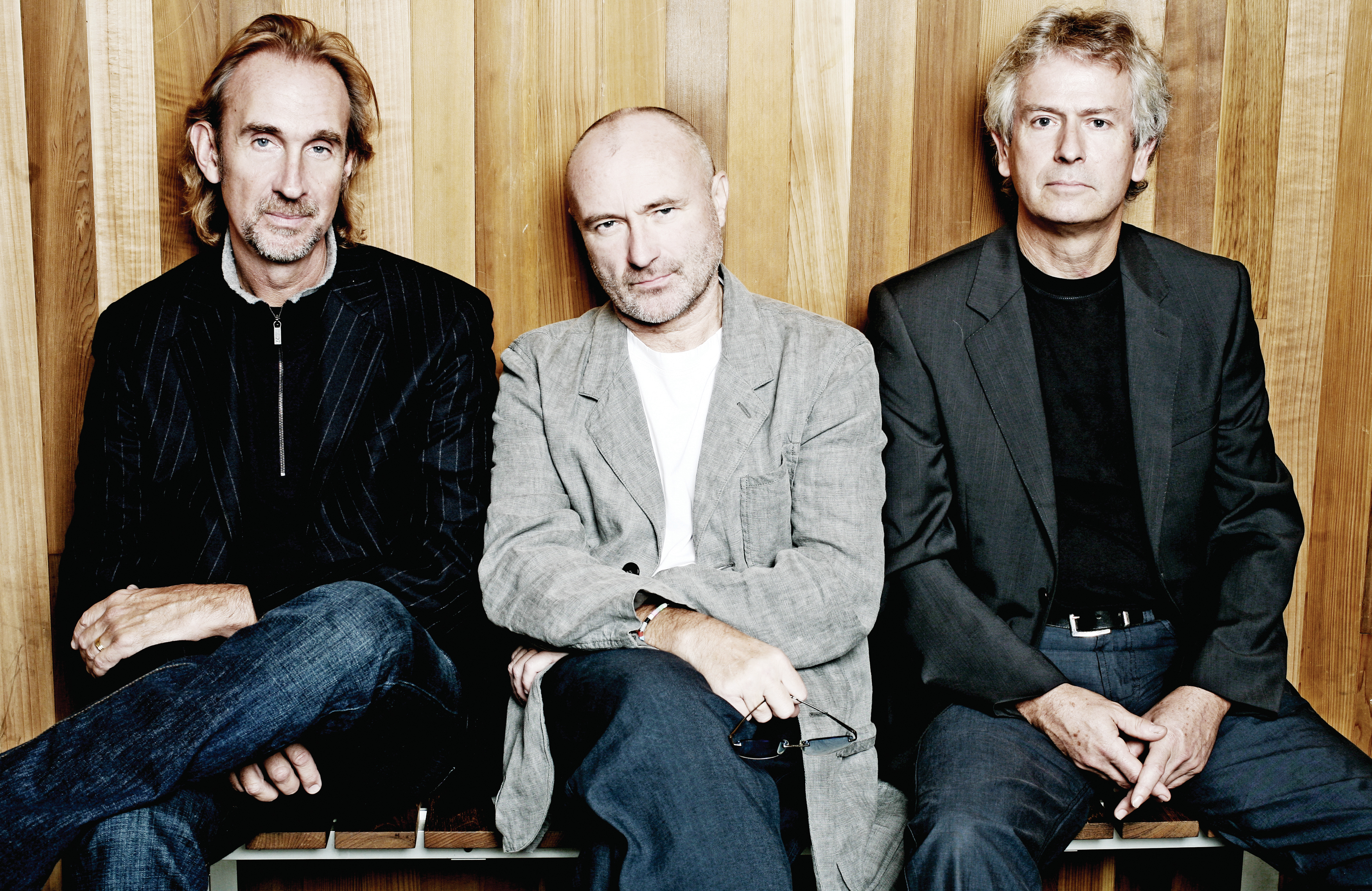 Genesis, 2007: Mike Rutherford, Phil Collins and Tony Banks | Photo: Stephanie Pistel
Genesis, 2007: Mike Rutherford, Phil Collins and Tony Banks | Photo: Stephanie Pistel
British prog-rock titans Genesis surprised much of its global fan base when it announced it was reuniting its hit-wielding line-up of Phil Collins, Mike Rutherford, and Tony Banks for a 2007 European and North American tour. Collins last toured with Genesis in 1992 and departed from the group in 1996 to focus on his solo career, making it 15 years since the trio had worked together. And with the exception of the 1997 Calling All Stations album and its accompanying European tour featuring Banks, Rutherford, and new vocalist Ray Wilson, Genesis itself has been inactive for nearly 10 years.
Collins, Rutherford, and Banks, along with long-time touring musicians Daryl Stuermer and Chester Thompson, are doing the gigs without a new album to support. The goal is to have fun, reestablish the band’s repertoire, and remind the world that Genesis live is still a force to be reckoned with. To that end, the group is performing a cross-section of music that goes well beyond its many top-10 radio staples, like “I Can’t Dance” and “Invisible Touch.” Several storied, darker epics from its early ’70s era that originally featured Peter Gabriel and Steve Hackett are included in the set, such as “Carpet Crawlers,” “In the Cage,” “I Know What I Like,” and “Ripples.” The tour also coincides with the release of a series of three boxed sets and individual CD reissues that chronicle the group’s entire 13-album studio output to date. Each CD is paired with a DVD containing a 5.1 surround mix, videos, concert clips, and other bonus material.
Innerviews caught up with Rutherford in the palatial interiors of the Peninsula Hotel in New York City. With tea and biscuits in hand, we explored the motivations for the tour, the Genesis creative process, the post-Collins version of the band, and what the future may hold for the reunited line-up.
Describe the impetus behind the reunion.
It’s been an intention and a conversation for the last few years. Phil doing a lot of work for Disney put it out of the picture until recently. We had a meeting two years ago with Peter Gabriel and Steve Hackett about doing a series of Lamb Lies Down on Broadway concerts, but that was put to one side because Peter had his own tour and album coming up. Maybe one day we’ll get around to that, but we thought we’d go ahead with the three of us which was the main part of our career anyway. We came together last October with the intention to go forward, but it wasn’t definite. We played a bit at a studio rehearsal place in New York City, learned the songs and joked around. It felt great and we decided to do it. Musically, I wasn’t so much worried about making this work. I knew I had to build a new double-neck because my other one died and I had to get the rig together. What took a lot of lead time was the production side, in particular lighting, set design, and screen content. Mark Fisher did the stage design and Patrick Woodroffe did the lighting and it looks great.
Banks said one of the motivations for the Genesis tour was his belief that the band’s profile has waned in recent times and isn’t as recognized for its contributions as it should be. What’s your take?
I agree that we get a bit overlooked. We’ve never had an album like Dark Side of the Moon or Tubular Bells which defines an artist’s career and dwarfs everything else. We’ve never had an album that people point to and say “That’s the classic Genesis album.” Because of that, we fall between the cracks really. When we were touring a lot, the Genesis songs on the radio represented the lighter side of the band, whereas a large part of the show was based on the heavier, instrumental, longer song side. So, it balanced out the radio perception of Genesis. Since we haven’t toured for a long time, people have kind of forgot what we were like live and it will be great to remind them and those who’ve never see us before of that other side.
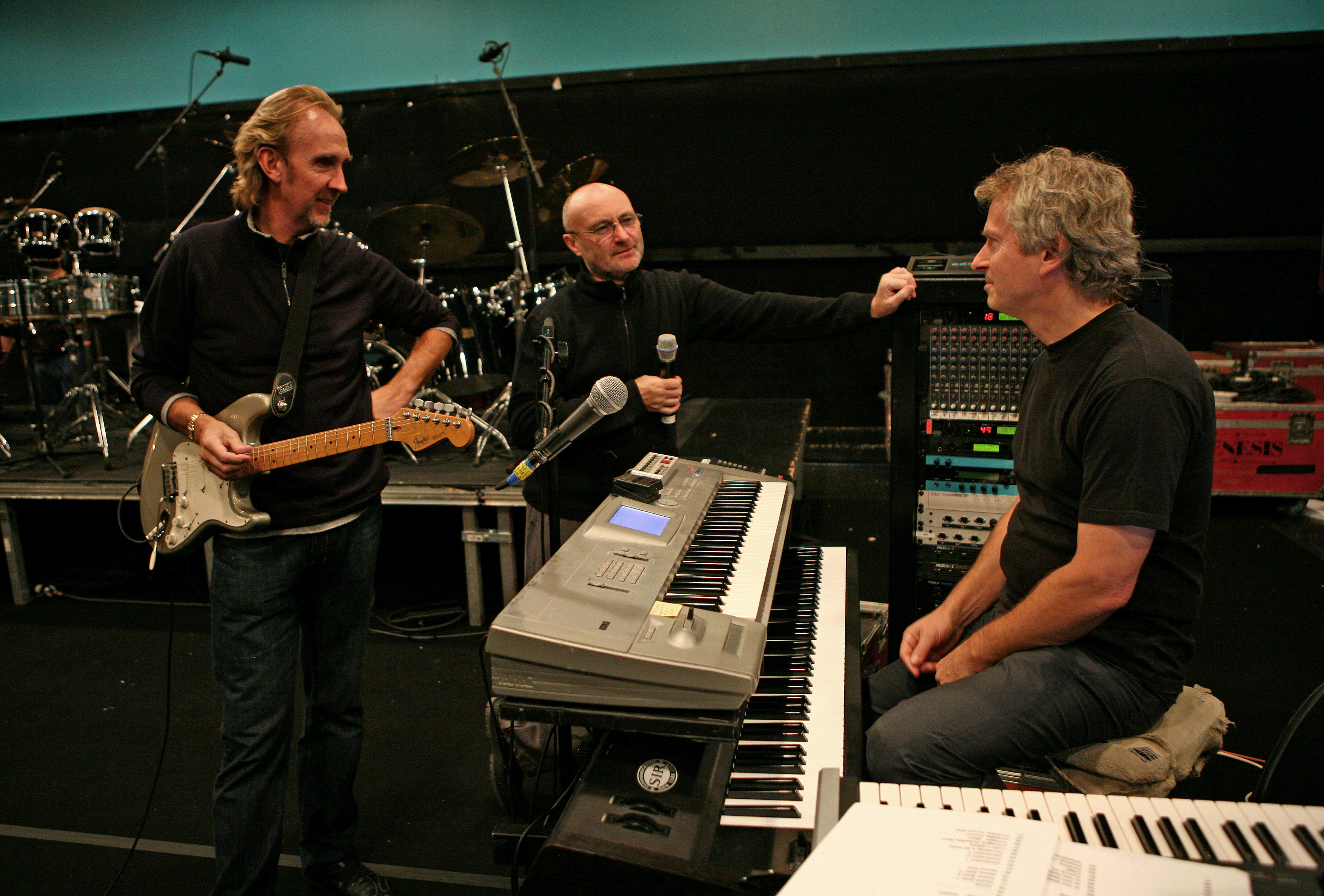 Genesis, SIR Studio Tour Rehearsals, New York City, 2007 | Photo: Stephanie Pistel
Genesis, SIR Studio Tour Rehearsals, New York City, 2007 | Photo: Stephanie Pistel
Describe the philosophy at work as you remixed the entirety of the Genesis back catalog for the new reissues.
It was more about sonic enhancement. The earlier songs had the most chance to benefit from the new stereo and 5.1 remixes because originally, some of those songs were recorded and mixed very quickly. There was always a tour coming up, or a session-related deadline to deal with. So, this represented a chance to improve them without changing the songs. We put more work into the drums, the bass, and the bottom end as a whole, which gives the songs more substance, but kept the spirit of the original mixes. I should mention Nick Davis who did all the hard work. He really improved some of those drum sounds without changing the character of the music too much. The drum sounds on those early records really were little and boxy. The snares had a very small sound. I think by working on the sonics a bit, Nick gave things a much warmer and bigger sound. There was less room for improvement with the later albums because we got better at recording from the Hugh Padgham era onwards. However, we had fun placing sounds and special effects in the surround channels.
The new mixes will completely replace the original ones going forward. There are some fans who consider that controversial.
The old, original mixes will always be out there and people can copy those CDs if they really need to have them. So, they’re safe. I admit I wasn’t convinced about remixing albums like Invisible Touch and Genesis. I felt those were our best recordings and I personally didn’t want to remix them, but I went with the flow. Having said that, I think the people that are concerned can be relaxed or comforted by the fact that the brief was not to do anything radical to the music.
How did you react when listening back to all of the band’s earlier output?
The funny thing is I had an idea in my mind about how songs from our catalog sounded. Initially, I was sure I liked some songs, wasn’t sure about some others, and felt there were some I definitely didn’t like. I definitely formed opinions of songs and stuck to them, but when I thought about it, I realized that there are some I haven’t heard for between 10 and 20 years. When I listened back to them, I realized there were some songs that were much better than I thought and vice-versa. For instance, The Lamb stands out much stronger than I remember it. It’s a really strident album with a lot of passion and fire that I hadn’t realized was there.
The Lamb was a hard album to make. And the trouble with that is I was judging the music by how difficult it was to make. The whole concept of The Lamb was darker, longer, and it was a real uphill battle to finish. That’s why A Trick of the Tail was easier to make. It was lighter, Phil was singing, and we had a whole new scenario with a breath of fresh air. The albums that were easier to make tend to be the ones I prefer, but the truth is, the main thing should be how the end result sounds. In general, the albums that are easy to make are normally quite good, but it doesn’t mean things can’t be the other way around.
In terms of other observations, some of the arrangements of the earlier songs were pretty busy and I thought “I wouldn’t do it that way now.” But I’m a different person now. I think I tried a bit too hard to be clever and great on the earlier material. After time went by, I realized that in a song arrangement, sometimes less really is more.
You’re known as a serious audiophile and have done endorsements for Sony and other audio manufacturers. Did that proclivity come into play when working on the new mixes?
Not really. Years ago what you say was true, but I’m not an audiophile anymore really. [laughs] I’m building a new house and I had a guy over the other day to try and work out some of the audio-visual stuff for it. He’s a real audio buff and loves his turntables. He was dying to talk to me about audio and I had to say “Look, I’m afraid we’re on a different page.” In the studio, I want a fantastic sound. I want to know the room is true and I’m very serious about mixing stuff so it sounds great. But outside of the studio I’m just a punter enjoying the songs. If it sounds nice, that’s what matters. I’m not concerned with whether or not something sounds good or great. I’ve gotten over that in the last 15 years and into a new state of mind.
When you do mix and master a new album, what is your test environment?
I had a BMW that had fantastic speakers in it and I knew exactly what my reference points were in it, but I sold it. Now my car has a huge new bass and sub-bass and I can’t really focus on the finer elements, so now I judge new recordings in the studio.
Let’s discuss Genesis’ collective songwriting process. Talk to me about how it evolved from the early days to We Can’t Dance.
In the era before Peter left, many songs were written by one or two people. People would also bring in bits, sections, and parts of songs and the band would work on that material, develop it, and finish it. The Lamb was more collaborative, but when Peter left, we started writing more individually. It wasn’t until Duke that we wrote together as a band. Most people don’t understand it, but since Duke, we went in with no music, just a blank bit of paper, and just jammed and improvised until little bits started to appear. Verses and rhythms would emerge and build up into songs. It’s quite an unusual way to write, and quite scary at day one.
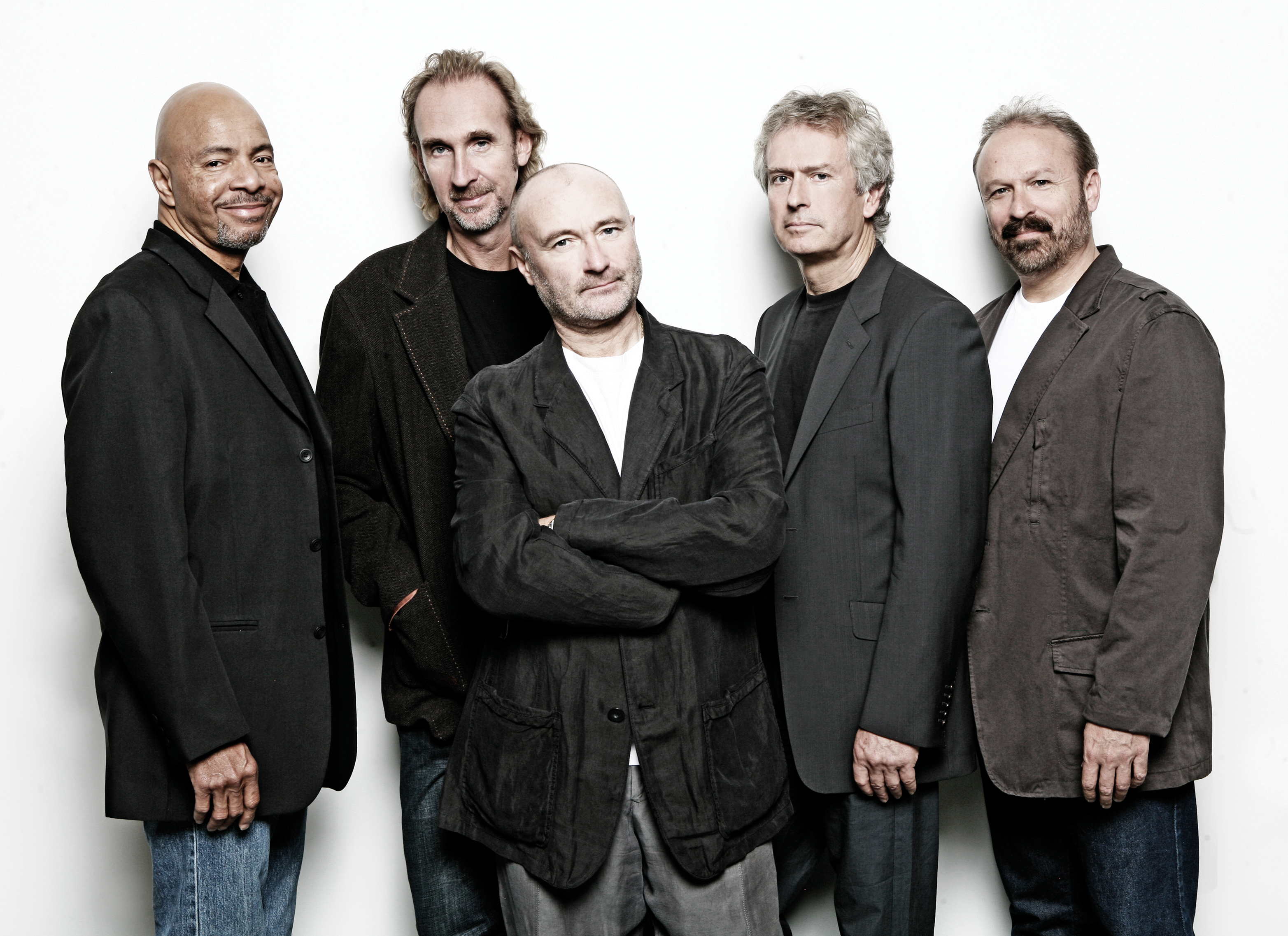 Genesis' 2007 tour lineup: Chester Thompson, Mike Rutherford, Phil Collins, Tony Banks, and Daryl Stuermer | Photo: Stephanie Pistel
Genesis' 2007 tour lineup: Chester Thompson, Mike Rutherford, Phil Collins, Tony Banks, and Daryl Stuermer | Photo: Stephanie Pistel
Describe the process of sifting through that material to extract the bits that result in a finished song.
It involves a lot of listening. Phil used to record everything onto DAT and we’d listen through and suddenly find bits we weren’t aware of when we played them. We’d say things like “that’s a nice bit” or “let’s forget about the first 10 minutes altogether and look at what came after.” It’s about identifying and organizing what’s special as a collective. You wait for the bits you all like to come to light. If the other two guys don’t agree something is special, you move on until you find the next strong moment. Typically, when we’re working together as a band and jamming and get something good happening, we usually know it.
I understand a lot of lyrics resulted from Phil improvising into the mic.
That’s true. When we were in the studio, we had a drum machine because it was nice for Phil to sing as well as just play the drums. The way it worked was the drum machine would start with a little loop or pattern. It kept us in time and gave us a feel. Phil would just sing and improvise and little things came out like lyrical sounds and phrases. The word “Mama” is a great example of one of the sounds that came out. Sometimes the words are there right from the start and you carry on from that. There’s nothing like having an organic vocal sound to work with when you’re writing, rather than writing music and then going away and coming up with the lyrics afterwards. If I was the one writing the lyric, I would often take a phrase, a bit of a phrase, certain words, or the sound or vowels and use that as a jumping off point.
If you’re writing a musical bit without the voice being there, you can spend eight bars on a chord just chundering around. But if the voice is fabulous, sounds terrific, and the melody is great, a real direction can come into view. Otherwise you can write a top line and put too many chords on it because you don’t realize it can be less busy if the voice was there carrying it. So, that’s why we wanted Phil to use that vocal improvisational approach. Also, when Phil is singing, you can sit on any old chord, and while chordally, that can be dull, it creates more space in the songs, which was good for us.
When a song arrangement began to emerge, an individual member would typically go off on his own to flesh it out. How did you choose who worked on which piece?
It was a case of someone saying “I really want to do this one because it excited me.” There were certain songs that we knew Phil should be working on because there was a vocal moment that suits his style. Tony would usually work on the longer songs. [laughs] As for me, I tended to write the simple lyrics like “Throwing It All Away,” “Turn It On Again,” “Land of Confusion,” and “Follow You, Follow Me.”
What are the challenges you faced serving as both a guitarist and bassist during the Genesis creative process?
There was always a slight problem when I wrote after Steve Hackett left in that I have to try and be two guys at once. The issue is a lot of times we wrote songs without bass. It was just guitar, keyboards, drums, and voice. We’d record rough takes of things and there wouldn’t be a bass part. When it came time to do the bass part, it was sometimes difficult because we didn’t have the bass pinning down the chords. So, sometimes I would have a choice of two notes to play on guitar and neither one would quite work because it’s helpful to have the bass pulling that chord into a certain area and vice-versa. And when I did add the bass notes, the song’s shape might change in other ways too. It can be a real challenge to find something that works as a result, but that’s the way it was. I couldn’t do both at once, so I did my guitar parts first and bass afterwards. When I write on my own, I normally work on guitar with bass pedals to accompany me. I’m trying to be a guitarist and sort of a bass player and I attempt to get the right rhythmic feeling underneath the melody and chords.
How did you and Phil work together to create rhythms?
In the early days, Phil and I were standing beside each other when we put together the groove and got the feel of the song together. Later on, we’d initially record songs with voice, drum machine, guitar, and keyboards, and straightaway, Phil would put the drums on after that. I’m talking about the guide stage where we’re putting together bits we’d sift through later. I’d typically try to record the guide bass as he put the drums down so I could try and feed off him to find rhythms and sounds, and vice-versa.
How have you evolved as a guitarist across your career?
Initially, I was the bass player and rhythm guitarist in Genesis. Even when Steve was the lead guitarist, I played about half the set on guitar with or without bass pedals. Now, I mainly play guitar onstage, although I love bass. But going back to And Then There Were Three, the truth is I could barely play lead guitar. You don’t suddenly become a lead guitarist. You have to work your way up to it. For the first couple of albums after Steve, I thought I was doing okay. I covered things fine as a songwriter, but as the albums moved along, my guitar playing started getting better. I felt more comfortable playing lead. I think I’m a songwriter who plays guitar, rather than a virtuoso guitarist, but I’m very comfortable with the lead parts I play.
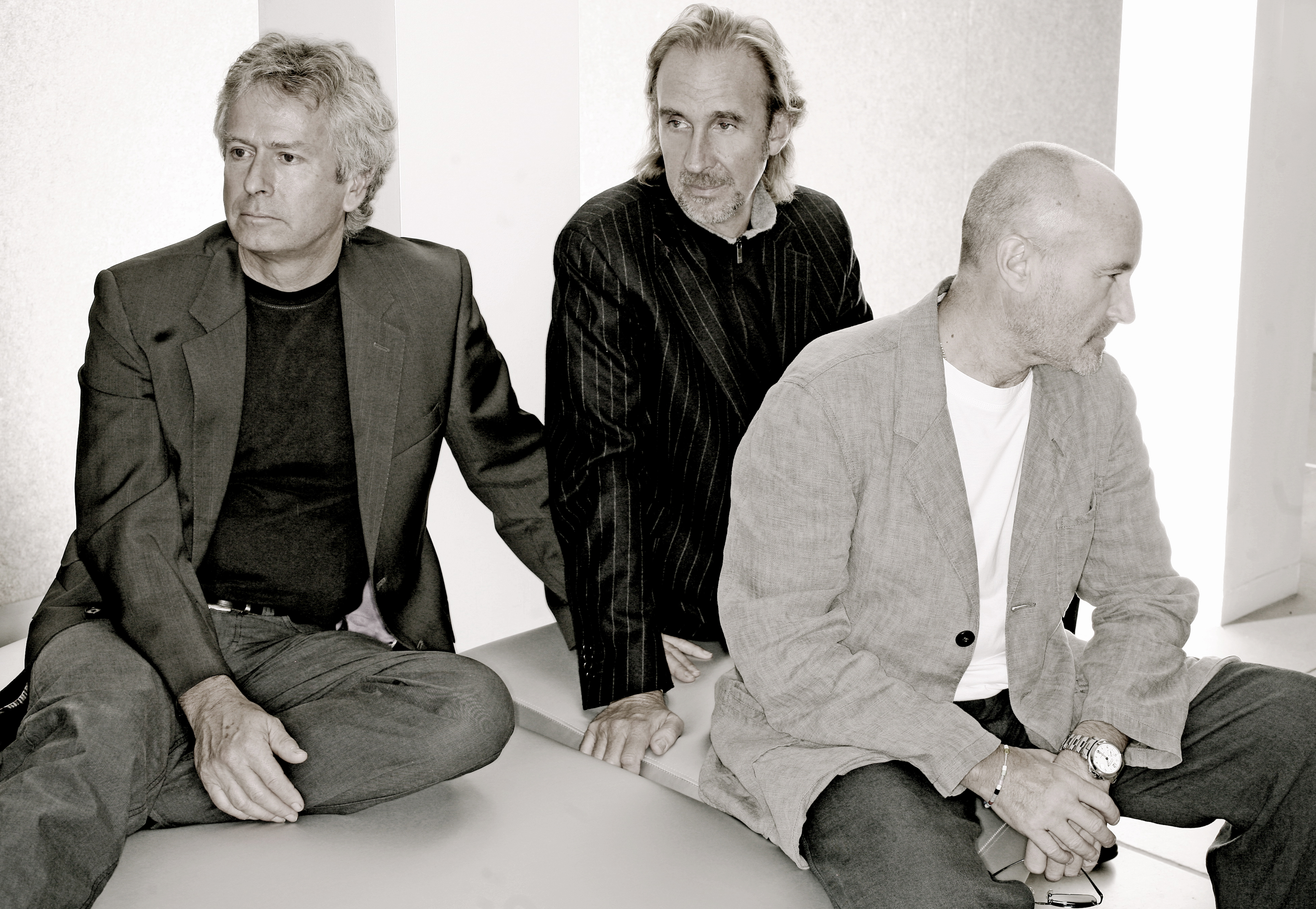 Photo: Stephanie Pistel
Photo: Stephanie Pistel
Tell me about the guitars you’re using on this tour.
I’m using a late-’80s Eric Clapton Model Fender Strat which I love because it can play the roles of many guitars. You can access such a diverse range of tones which makes it extremely attractive as a touring instrument. It’s also a simple case of habit and familiarity. I’ve been playing Strats for decades, and at this point, I’d feel wrong playing anything else. I also decided to have a new double-neck made that combines two guitars I really like for playing the earlier Genesis material, as opposed to going with a totally custom job where you don’t know what you’re going to get until it’s complete. I got a British luthier team called Charlie Chandler’s Guitar Experience to take the 12-string top half of a Gibson EDS-1275 double-neck, and combine it with a Yamaha TRB-4P bass for the bottom half. We went with the Gibson EDS-1275 because there are so very few solid body 12-strings made these days that we could marry to a solid body bass. You lose some of the resonance when you go this route, but the overall sound of both instruments is still mostly there.
During Genesis’ early days, you employed many alternate tunings. These days you’re taking a much more streamlined approach in that regard.
Yeah, I had all kinds of weird tunings on older songs like “Cinema Show” and “Ripples,” and it got so complicated. When we’d come back to tour after a break, I sometimes couldn’t remember the tunings, so I finally said, “Right—I’m done with that.” The one thing I always do, however, is tune the low E down to D. That makes the minor chords sound harder, and the rest of the chords sound richer, which really suits the character of most Genesis songs.
What is the most complex and challenging Genesis piece you’re doing on this tour?
Probably “Home By The Sea” because the instrumental part changes moods so quickly. It was originally recorded in sections in which I assigned different sounds as I saw fit, but playing it live is very hard to do. One minute the sound will be very spacey and heavily echoed, with big flanging stuff and the next minute I’ll need a very close-miced amp sound. The variety of sound over a four-minute passage was huge on the record, so trying to recreate that live is always a challenge.
Daryl Stuermer plays a major role during Genesis tours. What makes him so essential for the group?
First and foremost, Daryl knows all the chords to all the songs and I forget how they go. He’s the song maestro and I can always ask him. [laughs] That’s not why he’s in the band though. He joined in 1978 after coming out to New York for auditions. I had Pat Thrall and Elliot Randall, who played with Steely Dan, also come down. They were both great players, but I was after a guitarist who could really get Genesis. I gave Elliot a few songs to learn and he said “How do you want it? Do you want it rock? Do you want it a bit jazzy?” In contrast, Daryl arrived and understood the essence of what we’re about, including the textures and the sounds. He didn’t ask “How do you want it?” He already knew. He understood you have to play these songs with a certain sound and within a certain genre.
Daryl also has a fabulous guitar style and ability. He’s incredibly fluid and fast, and has a lovely natural skill on the instrument. He could also master bass enough. Initially, we were deciding if we needed a guitarist who played bass or a bassist who played guitar. The first guy to audition was the bassist Alphonso Johnson and as we jammed, we both realized it was going the wrong way. We realized we needed a guitarist who could play bass because the guitar role was too demanding for a bassist in general to do it. I think Alphonso recommended Daryl. There was an early tour we did with Daryl when I recall him really understanding the bass. Any guitarist can play bass notes on a song, but there’s something really unique about the bass in terms of the feel of the notes. You can tell if there’s a guitarist just playing bass versus a bass player playing bass. Daryl is now a great bass player on top of his other talents. It’s funny that both Chester and Daryl are from the jazz world. I think it’s because we demand a certain level of technique that musicians from that world bring to the table.
On the current tour, as well as during the We Can’t Dance Tour, Stuermer plays quite a few post-Hackett guitar parts. Tell me about that decision.
It’s because I love Daryl’s playing and I’m conscious that sometimes he doesn’t play enough guitar. I think he’s very cool about it. With the more recent compositions, it’s been hard to give up the guitar parts because they’re so integral to what I do. For “Jesus He Knows Me,” I knew I wanted Daryl to play the solo at the end. He rips it in a way that I couldn’t do with his incredible technique and energy. On this tour, we may play “In Too Deep” in America which in the past he played bass on and I played guitar on. This time, I’m having him play nylon-string guitar and I’ll play bass. I love bass, I really do, so I’m trying to play more of it on this tour. The nice thing about working with Daryl is there’s no ego or territorial thing. It’s about what’s best for the song.
 Genesis, 1997: Mike Rutherford, Tony Banks and Ray Wilson | Photo: Peter Robathan
Genesis, 1997: Mike Rutherford, Tony Banks and Ray Wilson | Photo: Peter Robathan
Why wasn’t Stuermer part of the Calling All Stations tour?
It wouldn’t work because Phil was doing a tour that overlapped with ours. That put both Daryl and Chester out of the picture.
What made you choose Anthony Drennan to serve as the Calling All Stations tour guitarist?
He’s a great, stunning player that is also part of The Corrs. In many ways he’s very underused in that band. Once he came and jammed and improvised with me for one day, it was obvious that he had great ability and could play melodies too. He also had a real hooligan side and could rock out and go completely wild with the whammy bar. Anthony was also a lovely guy, which always helps.
How do you look back at Calling All Stations?
There are some nice bits on the album. I look at it as if it could have been the first album of another phase of Genesis. The way forward would have been to do two albums very quickly. On the first album we learned a bit and maybe it lacked lyrically in some places. I think had we done three albums with Ray, the first one would have been viewed as a start, but not a great one. Ray did a fantastic job and he often doesn’t get enough credit. He was great live and it was a very hard gig. However, I just didn’t want to have to keep making albums and touring solidly for the next three or four years. Unfortunately, Calling All Stations is now judged as a one time line-up album, which is a hard way to look at it. Had it been viewed as the start of another phase, it would have been looked at differently, although it did do very well in Europe. I’m aware of how we could have improved the next album. I would have brought in someone else to co-write with us. I think Calling All Stations was lacking in some areas, so I think the second album would have been much better. But going forward with Genesis at that point was such an uphill road and I didn’t want to commit to it.
Surely you understood that going into it?
Yeah, I suppose so, but I guess I thought we might have gone further than we did. I never think very far ahead. I just do it and see what happens. [laughs] Looking back, it was a nice album and a good start to the next phase, but the next phase was too long of a phase for me to want to do it. It would have also meant stopping the Mechanics as well. Another thing struck me in that I was surprised at how far apart Tony and I were musically without Phil. You always imagine there’s me and Tony together, and then there’s Phil because Tony and I go back so far. But actually, Phil sits in between Tony and I and helps join us up. He draws a certain amount of stuff out from both of us musically. It’s hard to describe.
Was it a surprise when North America didn’t take to the album and tour?
Yes and no. It was, but I always expect the worst, so in a way it wasn’t really. What was surprising was how different America was to Europe, but I think America at that time was going through a musical transition as far as how it would view Genesis, and I suppose, Phil. Had we done a small theater tour, wherever we played live would have gone down pretty well.
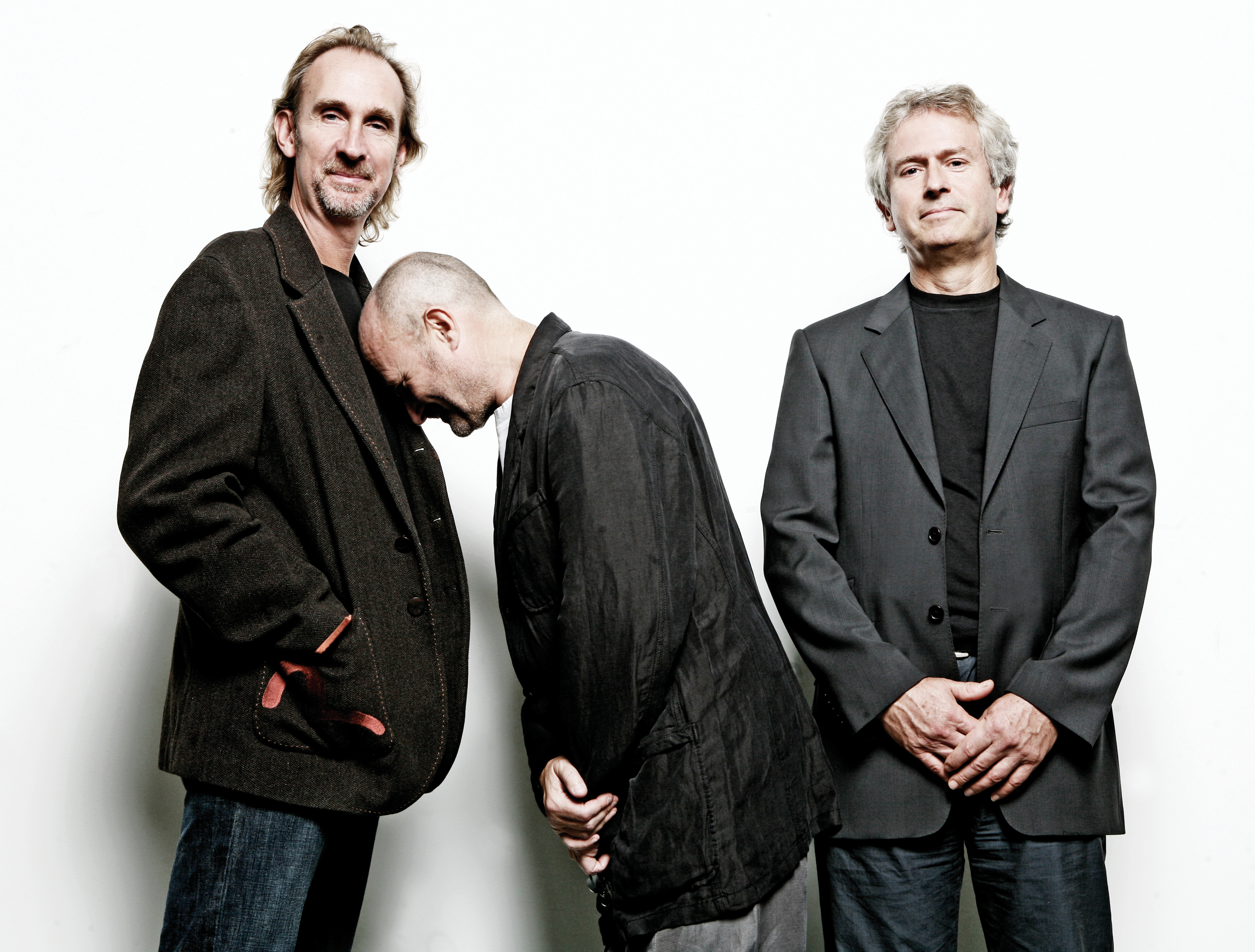 Photo: Stephanie Pistel
Photo: Stephanie Pistel
What are the possibilities of new music from the reunited line-up?
The idea of writing appeals to us. We love doing that. What worries us about doing an album is putting it out. It’s a big beast to deal with. I figure the business is due to change a bit going forward and maybe the album format is now irrelevant. Maybe we’ll do a little piece of work and put it out. Perhaps there is a different way forward. Doing an album and the huge issue of promoting it is what worries us, but we’ll address it after the tour.
If you end up doing a Lamb tour with Gabriel, how would you stage it given how heavily the 1974 show relied on an iconic image of him as a young man?
You’re right, that’s exactly the problem. The character is a young Puerto Rican kid in New York. There was some discussion about using a computer program that takes Peter’s face and his actions and puts them on a screen behind the band. Basically, his actions would drive a computer-generated image of a different, younger person. It’s cutting edge stuff we were talking about. It would be fun to do on stage because back in the old days, we staged it with a budget of a few thousand dollars. Sometimes the screens and projectors worked and sometimes they didn’t. So it would be a very exciting show to develop in this day and age. I think we could have very strong visuals. I feel The Lamb never really had a chance to be performed properly in that sense. The bigger question is what will we do or not do in terms of shows. On the table were five shows in Europe and five in America. We’ll chat again when Pete’s done his album and tour and we’ll revisit where we all stand on this. It’s all up to Pete now. The rest of us are up for it.
Beyond Genesis, what are you up to in a creative capacity these days?
To be honest, at the moment, nothing really. The Mechanics have run their course. It was a great ride, but with the loss of Paul Young, something changed. It was a wonderful to see this band that came out of playing pubs for fun as a low key thing put out an album in America and have a huge hit. It wasn’t what I had in mind at all, but very nice. One of the nicest moments in my career was when Atlantic chose the lead track “Silent Running” and it turned out to be a huge hit, yet nobody knew who did it. Suddenly, a musician quite far along in his career was able to put out new music and not be judged with any baggage. It was a great time and I think it’ll be hard to get to that point again, if ever. My son, who is 26 this year, manages a couple of artists, including a singer-songwriter named Ben Montague. I’ve written some songs with Ben in recent times. Other than that, there’s the Genesis tour and I’m quite comfortable for the moment. I’m happy to have a bit of a gap between album projects at this point in my career.